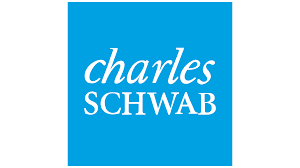Hypothesis Testing
Get familiar with the significant concept of Hypothesis Testing through this free online course. Learn types of errors, Z-test, T-test, sample, and population. Enroll and learn Hypothesis Testing in detail with the hands-on demo.
What you learn in Hypothesis Testing ?
About this Free Certificate Course
This free Hypothesis Testing course will help you comprehend the major concepts that help to carry it out successfully. You will learn about Type 1 & 2 errors and understand the Z-test in detail. You will learn about the Student’s T-test where you will go through types of T-tests, and their uses, and solve real-world examples to understand them better. You will further understand random sample and population size and their role in Hypothesis Testing. Lastly, you will learn independent T-test two sample and T-test outcome and paired T-test for student’s score. You will solve real-world examples along with a hands-on demo through which you will also gain the required practical knowledge. Complete the modules and a quiz to earn a free certificate of Hypothesis Testing course completion certificate.
Check out Great Learning’s Best Data Science Courses to gain in-depth knowledge in this field and earn the certificate that helps you grab better job opportunities.
Course Outline
This module discusses the important concept of hypothesis testing: type 1 and type 2 errors. You will go through them in detail and understand the various assumptions concerned along with solving a Z test result-related problem.
In this module, you will learn about the T-test from scratch. You will understand its uses, types, and solve an example to gain practical knowledge.
This module introduces you to the important terms in hypothesis testing called sample and population. You will understand how random sample and population size plays role in hypothesis testing.
This module in detail explains to you about independent T-test two sample and T-test outcome. You will go through a hands-on demo to understand how code works in each case.
In this module, you will go through an example where you will apply paired T-test for student scores and understand the implementation of the test and carry out the hypothesis testing.
With this course, you get
Free lifetime access
Learn anytime, anywhere
Completion Certificate
Stand out to your professional network
2.0 Hours
of self-paced video lectures
Frequently Asked Questions
What are the prerequisites required to learn this free Hypothesis Testing course?
This Hypothesis Testing course is suitable for beginners, so there are no prerequisites for enrollment.
How long does it take to complete this free Hypothesis Testing course?
There are two hours of self-paced video content in this course that learners can learn at their own pace and comfort.
Will I have lifetime access to the free course?
Yes, you can access any of the Great Learning Academy’s free courses at your preferred period and resume learning.
What are my next learning options after this Hypothesis Testing course?
You can go through Great Learning’s PG Data Science and Machine Learning Course by MIT.
Is it worth learning about Hypothesis Testing?
Yes, hypothesis testing is a useful tool for determining whether a claim is supported by evidence. It can help you to decide whether to accept or reject a claim and can also be used to compare different claims.
Success stories
Can Great Learning Academy courses help your career? Our learners tell us how.And thousands more such success stories..
Related Data Science Courses
Popular Upskilling Programs
Explore new and trending free online courses
Relevant Career Paths >
Other Data Science tutorials for you
Hypothesis Testing
What is hypothesis-testing?
Hypothesis testing is when an assumption is made and evidence is collected in favor of the assumption. In Statistics, hypothesis-testing is performed using sample data to draw inferences regarding a given population parameter or population probability distribution. An analyst decides which hypothesis-testing methodology to be catered to on the basis of the nature of data used and the analysis reason.
The sample data used while testing a hypothesis might come from a large population or a process of data generation. The term ‘population’ is used to refer to this sample data irrespective of its source.
The stats library of Python allows you to perform hypothesis-testing. There is a Python package, named ht, exclusively available for carrying out hypothesis tests in Machine Learning.
Hypothesis-Testing Terminology
There are some commonly used terms in hypothesis testing that one must know before conducting a hypothesis test. Those commonly used terms are:
Null Hypothesis: An assertion concerned with a population that you want to test. It is called the ‘null hypothesis in the sense that it assumes the contrast of our belief. For instance, if we are testing the presence of a specific ingredient in hair oil, our null hypothesis would state the absence of that ingredient in the oil. It is denoted by H0.
Alternative Hypothesis: The opposite of a null hypothesis is the alternative hypothesis in a test. Evidence for approval of this hypothesis is to be found through a hypothesis test. For the example mentioned above of hair oil, the alternative hypothesis would state the ingredient’s presence in the oil. It is denoted by HA.
Null and alternative hypotheses are always mutually exclusive of each other.
Test Statistic: A random variable computed from a random population sample is known as a test statistic. It is used in a hypothesis test to decide the rejection of the null hypothesis. For example, the test statistic for a t-test is t-statistic.
P-value: The probability of getting a value of the test static at least as extreme as the computed value in the null hypothesis of the hypothesis test is known as p-value. The smaller the p-value, the stronger is the evidence in support of the alternative hypothesis.
Significance Level: The significance level represents the probability of rejecting the null hypothesis when it is true. It is denoted by alpha (α). For example, a significance level of 0.01 marks a 1% risk of drawing an inference even though there is no actual difference.
Steps of Hypothesis-Testing
The entire process of testing a hypothesis is carried out in the following order of events:
-
State the Null and Alternative Hypotheses: The very first step that an analyst takes is to specify the null and alternative hypothesis for the corresponding hypothesis test.
-
Formulate an Analysis Plan: The second step is to map out an analysis plan depending on the nature of the data and the reason behind the analysis.
-
Analyze the Sample Data: In the next step, the analyst carries out the formulated plan to analyze the sample data based on the determined hypothesis.
-
Determine plausibility of Null Hypothesis: The last step that comes is to decide whether to reject the null hypothesis or state the plausibility of the null hypothesis for the given sample data. The decision made is determined by the p-value and significance value of the hypothesis test.
Need of Hypothesis-Testing in Machine Learning
All the discoveries made based on hypotheses need to pass the hypothesis test. The result of a hypothesis test is used to assert the statistical significance of a finding. As mentioned in the hypothesis-testing introduction, the result of a hypothesis test tells us whether the statement of the null hypothesis or the statement of the alternative hypothesis best reflects the sample data of the population parameter.
In Machine Learning, when we train an ML model, we must be confident about the population itself first. Thus, to analyze the nature and trend of a population, we need to conduct a hypothesis test as it tells whether a speculated hypothesis about the population is true.
Basis of Hypothesis
The entire hypothesis revolves around the basics of normalization and standard normalization. A variable is normally distributed when its curve is a normal bell-shaped curve representing the equal mean, median, and mode. On the other hand, we say that a variable has standard normal distribution when its mean 0 and the standard deviation is 1.
Types of Hypothesis Test
Four types of hypothesis tests can be performed. These types are:
- Z-test: This test concludes whether two population means are different for known variances and a large volume of sample data. The test static, in this case, is z-static and the formula used is:
Z= X- µₒs
Here, Z = Z-test
X = sample average
µₒ = mean
s = standard deviation
-
T-test (Student t-test): Another hypothesis-testing tool differentiates between the means of two groups when their variances are not given. The test static, in this case, is t-static. It is further categorized into three kinds which are as follows:
-
One sample t-test
-
Independent two-sample t-test,
-
Paired sample t-test
t-tests have common applications in the field of Data Science, CS Research, and ML.
-
ANOVA test: ANOVA stands for Analysis of Variance. This test reports a statistically significant result when one of the groups differs significantly from the overall mean of the groups. It can be one-way, two-way, or n-way. The test static here is F-static.
-
Chi-square test: This hypothesis test is used to test the independence of two variables. It is sensitive to the size of the test sample. A chi-square test holds a comparison between expectations and model results. The test static in this type of test is chi-squared static.
Alpha Risk & Beta Risk
In statistical hypothesis-testing, there might be a risk of rejecting the null hypothesis when it is true. This risk is referred to as alpha risk. The other term for alpha risks is Type-I error and false positive. The amount of alpha risk is mainly governed by the size of the sample used. A large sample size corresponds to low alpha risk.
In contrast to alpha risk, there is a beta risk, commonly known as Type-II error. It is the likelihood of approving the null hypothesis when it is actually false, i.e., it is a false negative.
Real-World Examples of Hypothesis Tests
The real-world examples in various fields that involve hypothesis-testing are given below:
Example-1: Hypothesis tests are done in different clinical trials to check the effectiveness of a new drug for curing a certain symptom.
Example-2: To test the presence of a specific ingredient in any cosmetic item, food item, etc.
Example-3: A hypothesis test can be used to determine whether a new type of manure will increase soil fertility.
Example-4: Hypothesis tests are useful to find evidence in favor of a certain marketing strategy by analyzing the business growth.
Example-5: A hypothesis test can be run to determine whether an ML model fulfills the requirement in concern.
Likewise, endless real-world examples can be cited to show the implementation of hypothesis tests.
About the Course – Hypothesis Testing
The planned curriculum of this course will highly benefit the enthusiastic learners seeking opportunities in the field of Machine Learning. The hypothesis-testing course of Great Learning will help the learners to build a strong base in hypothesis-testing. Taking up this course enables you to get an insight into of Machine Learning Analytics job. Another advantage of this online course is that it is going to cost you nothing except for your time and dedication.
The content of this online course is well structured to give a boost to beginners. It starts with a descriptive hypothesis-testing introduction and ends with a quiz to test your skills. On qualifying for the quiz, you can claim your free course completion certificate. Hence, along with learning new skills, you get a certificate to upgrade your CV and LinkedIn profile. This course contains two hours of video content presenting lectures on the basics of hypothesis-testing, including a description of student t-test and paired tests, for example.











































.jpg)







